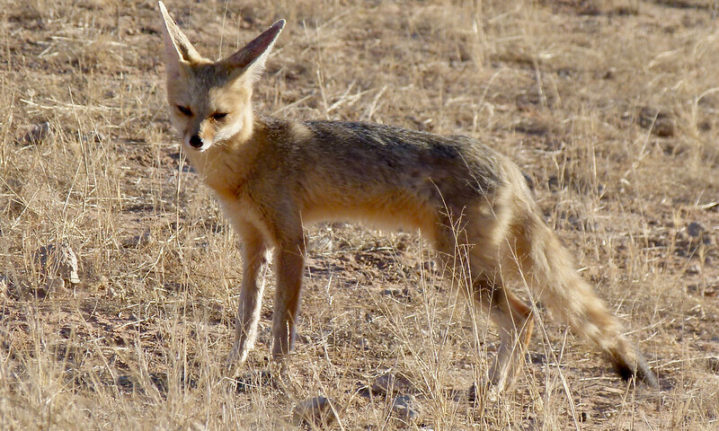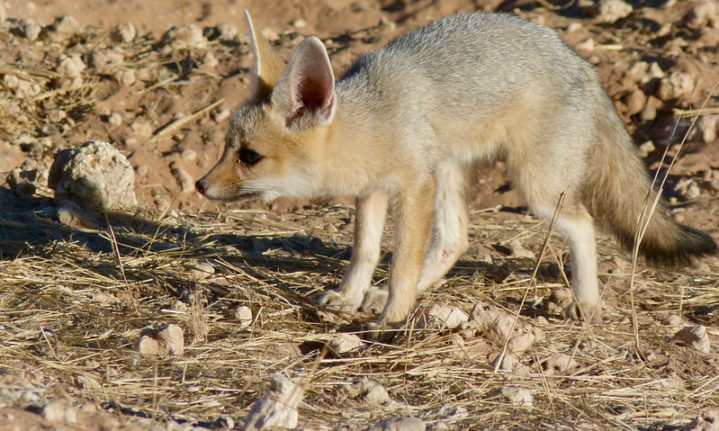The Cape fox is one of the smallest members of the Canidae family. If the Cape fox looks familiar to you, that’s because they share a similar feature with bat-eared foxes: large ears! Whereas bat-eared foxes have round ears, the Cape fox has triangular-shaped ears. Here’s everything you need to know about the beloved Cape fox.
Appearance

Credit: Bernard Dupont/Flickr Commons
The Cape fox is the only ‘true fox’ in southern Africa. The term ‘true fox’ refers to the Vulpes genus of the Canidae family, represented by twelve different species. ‘True foxes’ are grouped together by their distinct characteristics: a flat skull, a tipped tail and a pointed muzzle. These characteristics are also what sets them apart from other members of the Canis genus, according to World Atlas. In this sense, a bat-eared fox is not a ‘true fox.’
A fully grown Cape fox can weigh approximately 2.6kg – just a little more than a bag of sugar! Excluding the tail, they are approximately 55 centimetres in length, according to National Geographic.
Diet

Cape fox digging for a quick snack. Credit: Bernard Dupont/Flickr Commons
A Cape fox prey on insects, mice and other small animals. On occasion, they may ingest wild fruit and carrion, according to Siyabona Africa. To catch prey that live underground, a Cape fox will use its large ears to listen. Once they hear movement, they dig rapidly and use their small but strong jaws to capture them.
Habitat

Credit: Bernard Dupont/Flickr Commons
Similar to other small members of the Canidae family, they prefer open grasslands with either scattered thickets or semi-desert scrub. They can also adapt to fynbos, and need a water source close by.
Breeding

Credit: Bernard Dupont/Flickr Commons
A female Cape fox can give birth to up to five offspring during October and November.

Credit: Bernard Dupont/Flickr Commons
Gestational period lasts more or less two months.
Behaviour

Credit: Bernard Dupont/Flickr Commons
They appear to be primarily nocturnal, meaning that they are most active during the night. They also appear to be monogamous creatures, like other canids.
Distribution

Credit: Tim Ellis/Flickr Commons
The Cape fox is both very common and widespread in central and western regions of southern Africa. The population has been observed to be expanding its range southwestwards, even reaching the Atlantic and Indian Ocean coastlines.
Conservation Status

Credit: Chris Eason/Flickr Commons
According to the Endangered Wildlife Trust, Cape foxes are classified as Least Concern under the International Union for Conservation of Nature Red List of Threatened species.
ALSO READ

























